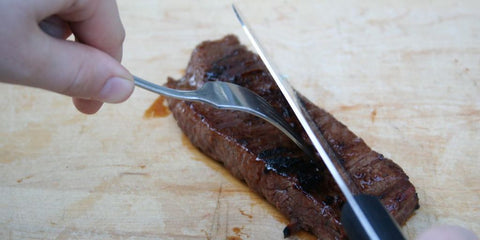Preparing Your Artichoke
Gather Tools and Ingredients
It's important to have all the necessary tools prepared before starting to cut your artichoke. Some items to have on hand - fresh artichokes, a sharp chef’s knife, a sturdy cutting board, and a bowl of water mixed with lemon juice to prevent the artichokes from browning as you work.
Clean the Artichoke
Start by washing the artichoke to remove any dirt or debris. It's important to clean the artichoke properly to ensure that no grit remains between the leaves.
Apply Lemon Juice to Prevent Browning
After washing, place the artichoke into the bowl of water mixed with lemon juice. This step is essential to prevent the artichoke from browning, which affects both its appearance and taste. The acidity of the lemon juice helps keep the artichoke fresh and visually appealing as you continue with the preparation process.
Trimming the Artichoke
Trim Off the Top
Begin by using your chef knife to cut off the top third of the artichoke. This removes the tough, fibrous parts of the leaves, which will make it easier to eat.
Snip Leaf Tips
Next, take a pair of kitchen shears and carefully snip the top portion of each leaf. This removes the thorny tips, making the artichoke safer to handle and prepare.
Remove or Trim the Stem
Finally, address the stem of the artichoke. If you want the artichoke to sit flat while cooking, cut the stem right at the base. Alternatively, for those who wish to retain as much of the artichoke as possible, trim the dry end of the stem with a paring knife and peel it. This will preserve more of the artichoke, and even though it won't sit flat, it will still cook and taste delightful.
Removing the Choke
Spread the Leaves to Expose the Choke
To access the choke, gently spread the leaves of the artichoke apart. You will see the fuzzy center, which is not edible and needs to be removed.
Use a Spoon to Remove the Choke
Once the choke is exposed, use a spoon or, preferably, a melon baller to scoop out the fuzzy material. The melon baller is particularly effective due to its sharp edges, which can cleanly remove the choke without damaging the heart of the artichoke.
Rinse and Drain the Artichoke
After removing the choke, it's important to rinse the artichoke under cool water to ensure all remnants of the choke are washed away. Allow the artichoke to drain or gently pat it dry with a paper towel. This will ensure that your artichoke is clean and ready for further cooking.
Final Touches
Give the stem a final trim to remove any remaining fibrous parts, ensuring a smooth texture. Next, revisit the top of the artichoke. Any remaining tough leaf tips can be trimmed to create a uniform appearance and texture. Finally, check the outer leaves once more. Removing any that are loose or damaged gives your artichoke a neat and appetizing look. Artichokes can be made into dips, stuffed with rice or meat, or roasted as a side dish.



